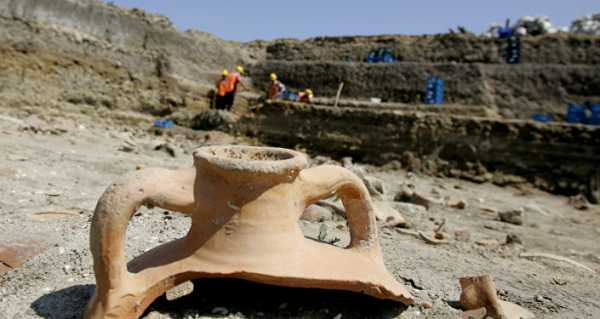
The history of Metropolis in Western Turkey, which dates back to the Classical Age, Hellenistic Era, Roman, Byzantine, Beylik and Ottoman periods, has been revealing its secrets to archaeologists since 1990, with structures such as the Hellenistic theatre, council building, Roman bathhouses sports area and streets found during the excavations.
As archaeological excavations in the ancient city of Metropolis, situated in western Turkey, enter their 30th year, four monumental structures connected to each other have been unearthed in yet another fascinating discovery, writes Hurriyet Daily.
The expedition, headed by Manisa Celal Bayar University Archeology Department Professor Serdar Aybek, found four almost completely preserved cisterns under a seven-meter earth fill during digs launched in July in the ancient “City of Mother Goddess”.
Surrounded by strong walls, the water tanks are believed to have been used to meet the water needs of the city during the Late Roman period. The archaeologists have hailed the find as important in terms of shedding light on many as-yet mysterious aspects of that period.
Cisterns Served a Multitude of Needs
Residents of Metropolis built the cisterns in the acropolis, the highest vantage point in the city, as an alternative to the water resources in the lower city. This was necessitated by defence requirements, especially during the Byzantine Age.
If a protracted siege were to come in the wake of an enemy attack, the cisterns would meet the water needs of the residents. The four cisterns in the metropolis acropolis have been estimated to have the capacity to carry 600 tonnes of water.
The four cisterns were all erected next to each other, apparently for convenience’s sake, to fulfil daily water consumption needs, as well as provide for agricultural activities and the water needs of public buildings.
The Professor estimates that the cisterns supplied water to the entire settlement on the lower slopes of the acropolis, and especially to the upper bathhouse structure.
The latter supposedly had three floors, and is one of the best-preserved buildings in Metropolis.
Nevgul Bilsel Safkan, the general manager of the Sabancı Foundation, which has financially supported the digs since 2003, hailed the discovery as shedding light on the life of residents in those ancient times, including their water needs, defence strategies, and even eating habits.
The numerous food remains, animal bones and ceramic pieces unearthed during excavations show that Metropolis started using the cisterns as garbage dumps in the 12th and 13th centuries A.D.
Incidentally, studies of the animal bones found in the cistern revealed that cattle, sheep and poultry had constituted a significant part of the basic diet of the locals.
The city, whose history dates back to the early Neolithic Age, the Hellenistic Age, Roman and Byzantine periods, was first investigated in the course of archaeological field work in 1972 by Professor Recep Meriç from the Dokuz Eylül University, Izmir. Excavations were launched in 1989.
In 1995, a Hellenistic marble seat of honour with griffins was dug up in the Ancient Theatre, and is now displayed at the Izmir Archaeological Museum.
In addition, over 11,000 historical artefacts consisting of ceramics, coins, glass, architectural pieces, figures, sculptures, bone and ivory artefacts and many metal finds were unearthed.
Sourse: sputniknews.com






